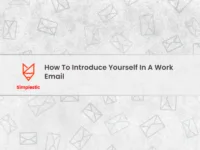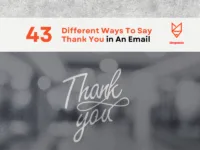A great email subject line can make all the difference in getting your message noticed. Witty subject lines not only grab attention but also set the tone for your message. They can spark curiosity and make your emails stand out in a crowded inbox.
Using humor or clever wordplay can show your personality and engage your audience. When you write something intriguing or funny, people are more likely to open your email. This can lead to better communication and stronger connections.
In this article, you’ll find tips and examples that can help you craft your own witty subject lines. With a little creativity, you can transform your email communication and keep your readers interested.
Principles of Effective Email Subject Lines
Crafting strong email subject lines is essential for grabbing attention. Focus on making them relevant, clear, and actionable. These principles help you connect with your audience effectively.
Relevance and Personalization
Make your subject lines relevant to the reader’s interests. This shows that you understand their needs. For example, if you’re emailing about a sale, mention the specific items that interest them.
Personalization can increase open rates. Address the recipient by name or reference their past behavior. For instance, “Special Offer Just for You, Anna!” is more engaging than a generic subject line.
To ensure relevance, consider using data. Analyze what topics your audience engages with. Tailor your subject line to reflect these interests. Relevant emails are more likely to stand out in busy inboxes.
Brevity and Clarity
Be concise. A subject line should ideally be between 6 to 10 words. This length makes it easier to read quickly. Aim to get your point across without unnecessary words.
Clarity is key. Avoid using jargon or complex phrases. Instead of saying “Enhance your productivity with our tools,” try “Boost Your Productivity Today.” This is straightforward and easy to understand.
Consider using numbers and lists. For example, “5 Tips to Organize Your Workspace” is clear and offers immediate value. A straightforward approach helps your email get noticed and read.
Actionable Language
Using action words can motivate readers to open your email. Start with verbs like “Discover,” “Join,” or “Get.” For example, “Join Our Webinar and Learn New Skills” encourages the recipient to take action.
Create a sense of urgency. Phrases like “Limited Time Offer” prompt immediate responses. Urgency can increase open rates when readers feel they might miss out.
Make your subject lines intriguing. Ask a question or offer a solution. A subject line like “Ready to Transform Your Morning Routine?” piques curiosity and invites engagement. This sparks interest and encourages readers to find out more.
The Psychology Behind It
Witty subject lines can grab attention and increase open rates. They use humor and evoke emotions to create curiosity. This section explores how humor influences your emails and how triggering emotions can lead to higher engagement.
Humor and its Impact on Open Rates
Using humor in subject lines can be a powerful tool. Funny lines make your emails stand out in crowded inboxes. When you make people laugh, they are more likely to click.
Effective Strategies:
- Puns and Wordplay: These can catch the reader’s eye while making them smile.
- Relatable Humor: Connect with everyday situations that your audience knows well.
A witty subject line can create a positive feeling about your email. This leads to higher open rates and better engagement. Being funny can also encourage readers to share your email with others.
Emotional Triggers and Curiosity
Emotions drive decision-making. Witty subject lines that evoke feelings can spark curiosity. When readers feel something, they are more likely to explore further.
Key Emotions to Target:
- Surprise: An unexpected twist can intrigue the reader.
- Nostalgia: Reminding people of good memories can create a bond.
For example, using a playful reference to a popular culture moment can invite readers to learn more. When you stimulate curiosity and connect emotionally, you pave the way for stronger engagement. This can help ensure that your emails get the attention they deserve.
Crafting Witty Email Subject Lines: Best Practices
Creating witty email subject lines can grab attention and encourage opens. Focus on using clever wordplay, choosing the right timing, and using cultural references. These strategies can make your emails stand out.
Wordplay and Puns
Puns can add humor and charm to your subject lines. A clever twist on words makes your email memorable. Include words related to your content but with a playful twist.
Examples of Puns:
- “Lettuce help you with your garden!” (for gardening tips)
- “Donut miss out on our sale!” (for bakery promotions)
Choosing simplicity is crucial. Avoid complicated puns that may confuse readers. Keeping it light-hearted yet relevant helps connect with your audience.
Timing and Context
Timing is essential for witty subject lines. Relate your message to current events or trends. This adds a layer of relevance that makes your email more appealing.
For instance, sending a funny subject line during holidays can increase engagement. Consider phrases like, “Get in the spooky spirit with our Halloween deals!” This ties into the season and encourages readers to act.
Keep in Mind:
- Use timely references to connect with your audience.
- Avoid overly niche references that your readers might not get.
Cultural References
Incorporating cultural references can enhance your subject lines. Relate to movies, songs, or popular phrases that resonate with your audience.
For example, a subject like, “It’s a Trap! Don’t miss our incredible offer!” appeals to Star Wars fans. This creates an instant connection through humor and familiarity.
Tips for Using Cultural References:
- Ensure the reference is widely recognized.
- Avoid clichés or overused phrases to keep it fresh.
Using these methods, you can create engaging subject lines that capture attention. Focus on clarity and relevance for the best impact.
Examples of Witty Subject Lines
Witty subject lines can grab attention and improve open rates. Each industry has its own style, making humor fit the brand’s voice and audience.
E-Commerce and Retail
In e-commerce, catchy subject lines attract customers. Here are a few examples:
- “Shop Like a Boss! 🛍️”: This playful line invites customers to feel empowered while shopping.
- “Sale Alert: Bring Your Wallet and Your Sense of Humor!”: This encourages readers to shop, while making them smile.
- “Did Someone Say 50% Off? Yes, Please!”: This line creates excitement and urgency for discounts.
These subject lines blend humor with clear messages about sales, enticing customers to take action.
B2B and Software Services
In B2B marketing, wit can differentiate a brand. Some effective subject lines include:
- “Let’s Make Your Software Do Backflips!”: This adds a fun twist while highlighting software capabilities.
- “Your Competition Won’t See Us Coming!”: This line builds intrigue and suggests an edge over rivals.
- “Upgrade Your Workflow, No Superpowers Required!”: Humor here makes the offering approachable and relatable.
These catchy lines engage potential clients while communicating professional benefits.
Entertainment and Media
In the entertainment industry, a clever subject line can excite followers. Examples include:
- “Binge-Watch Like There’s No Tomorrow!”: This line creates anticipation for new content.
- “Your Next Favorite Show Is Waiting!”: Keeping it light, this implies that viewers are missing out on great entertainment.
- “Get Ready for Drama… the Good Kind!”: This teases upcoming content, using wit to spark interest.
These subject lines create a fun connection with the audience, inviting them to engage with new media.
Work-Related Emails
- “Quick Question: Coffee or Tea?”
- “Can We Talk About Unicorns?”
- “Your Daily Dose of Awesome Awaits!”
Event Invitations
- “Join Us for a Night of Fun and Free Snacks!”
- “Don’t Miss Out: Your Weekend Just Got Better!”
- “We’ve Got a Party, and You’re Invited!”
Follow-Ups
- “I Promised the Fun Would Continue!”
- “Checking In: Did the Cat Steal Your Keyboard?”
- “Did You Forget? I’m Hard to Forget!”
Marketing Promotions
- “Our Sale is So Good, It’s Practically a Secret!”
- “Your Wallet Called: It Wants This Deal!”
- “Warning: Too Much Savings Might Cause Smiling!”
Newsletters
- “News Flash: Better Things Are Coming Your Way!”
- “Unlock the Secrets to a Happier Inbox!”
- “This Email Might Just Change Your Life!”
Seasonal Greetings
- “Fall Into Savings: It’s Pumpkin Spice Time!”
- “Your Winter Wonderland Awaits—Open for Magic!”
- “Roses Are Red, Violets Are Blue, Our Deals Are Hot, Just for You!”
Feel free to mix and match ideas to suit your style!
The Dos and Don’ts of Witty Email Subject Lines
Crafting witty email subject lines can grab attention and increase open rates. Knowing what to do and what to avoid helps you create effective and engaging subject lines.
The Dos
- Be Relevant: Ensure your subject line relates to your email content. A clever line that doesn’t match can confuse or disappoint readers.
- Keep It Short: Aim for 5-7 words. Short lines are easier to read and fit well on mobile screens.
- Use Humor Wisely: Light humor can enhance your message. Try puns or light-hearted references that match your audience’s taste.
- Personalize When Possible: Use the recipient’s name or reference past interactions. This adds a personal touch that can increase engagement.
- Test Variations: Experiment with different subject lines. You could run A/B tests to see which types work best for your audience.
The Don’ts
- Avoid Being Too Clever: Sometimes, cleverness can get lost. If the humor is too subtle, it may confuse your readers.
- Steer Clear of Spammy Words: Words like “free” or “urgent” can trigger spam filters. Use language that feels genuine and trustworthy.
- Don’t Mislead: Never use a witty subject line that doesn’t reflect the email’s content. This can annoy your readers and hurt your reputation.
- Refrain from Overusing Emojis: While occasional emojis can grab attention, overusing them can seem unprofessional or childish.
- Skip Commonplace Phrases: Lines like “You won’t believe this!” can feel cliché. Strive for originality to stand out from the crowd.
Measure the Effectiveness of Your Subject Lines
To improve your email open rates, you need to track how well your subject lines perform. Understanding key metrics and using A/B testing will help you refine your approach.
Metrics to Track
When measuring subject line effectiveness, focus on these key metrics:
- Open Rate: This shows the percentage of recipients who opened your email. A higher open rate means your subject line is appealing.
- Click-Through Rate (CTR): This indicates how many people clicked on links within your email. A strong CTR suggests your subject line encouraged engagement.
- Conversion Rate: This measures the number of recipients who completed a desired action, like making a purchase or signing up for a webinar.
You can calculate these rates using the following formulas:
- Open Rate: (Number of Opens / Number of Emails Sent) x 100
- CTR: (Number of Clicks / Number of Opens) x 100
- Conversion Rate: (Number of Conversions / Number of Clicks) x 100
Tracking these metrics helps you identify which subject lines resonate with your audience.
A/B Testing Strategies
A/B testing is an effective way to compare two different subject lines. Here’s how to do it:
- Choose Two Subject Lines: Pick one that you think will perform well and one that you think could be better.
- Divide Your Audience: Split your email list into two equal groups. Make sure they are similar to get accurate results.
- Send the Emails: Send one subject line to Group A and the other to Group B.
- Analyze the Results: After the emails are sent, look at the open rates, CTR, and conversion rates of each group.
This method helps you understand which subject line is more effective. Over time, you can use the insights to improve your future subject lines.
The Role of Brand Voice in Witty Subject Lines
Crafting witty email subject lines requires a strong brand voice. This voice helps your audience connect with your message. It sets expectations and builds recognition.
Aligning with Company Personality
Your brand voice should reflect your company’s personality. For instance, a playful brand can use humor in its subject lines. Think of a coffee shop that uses puns about caffeine.
Examples:
- “Espresso Yourself Before Monday Hits!”
- “Decaf? Not in Our Vocabulary!”
These examples match the friendly and fun tone of the brand. If your brand is more formal, adopt a clever approach without being too casual. For example, a law firm might say, “Don’t Leave Your Case to Chance!” Make sure your choice of words aligns with how your brand usually communicates. This creates a cohesive experience for your audience.
Consistency Across Campaigns
Consistency in your brand voice is key. When you maintain the same tone in your subject lines, your audience learns what to expect. This builds trust and loyalty over time.
A well-defined voice helps streamline your messaging. Whether you are launching a new product or sending a seasonal promotion, keep your tone aligned.
Quick tips for consistency:
- Create a style guide for your brand voice.
- Review past emails to identify patterns.
- Test your subject lines with different groups to see what resonates.
By staying consistent, you reinforce your identity and enhance recognition. This makes your witty subject lines stand out while remaining true to your brand.
Overcoming Challenges with Witty Subject Lines
Crafting witty subject lines can be tricky. You want to grab attention while avoiding confusion and blending in with the rest of your emails. Here are two key aspects to consider: misinterpretation and originality.
Avoiding Misinterpretation
Witty subject lines can be clever, but they must be clear. If your humor is too subtle, readers may not understand your message. This can lead to confusion or even frustration. Aim for a punchline that supports the email’s content. For example, a subject line like “Did Someone Say Coffee? ” works well if your email is about a coffee meeting.
Consider your audience’s background and communication style. What might be funny to one person could be confusing to another. Use simple references that most people can relate to. Test your subject lines with a small group before sending them out widely. This helps ensure your wit lands well.
Staying Unique and Original
In a crowded inbox, it’s important to stand out. Being witty is not enough; you must also be unique. Think outside the box to create subject lines that capture attention. Avoid clichés or phrases that everyone uses, as they lose their charm.
Get inspired by current events or trending topics relevant to your audience. For example, if your email promotes a sale, you might say, “Steep Discounts That Will Make Your Wallet Smile!”
Keep your target audience in mind. The same line won’t resonate with everyone. Tailor your wordplay to the interests and preferences of your readers. This personal touch can make a big impact.
Advanced Tactics for Seasoned Marketers
To connect with your audience effectively, you can use social proof and interactive elements in your email subject lines. These strategies can enhance engagement and response rates.
Leveraging Social Proof
Social proof shows potential customers that others trust your brand. This can be a powerful motivator. Use numbers or testimonials from satisfied customers to make your subject lines more persuasive.
For example, you could say, “Join 10,000 happy customers!” or “See why five stars are not enough!” This creates curiosity and a sense of community.
Also, highlight any awards or media mentions you have received. Phrases like “As seen in…” or “Award-winning service” can increase your credibility.
Make sure that any claims you make are truthful to maintain trust with your audience.
Interactive Elements
Interactive elements grab attention and encourage click-throughs. Use questions in your subject lines to engage your readers. For example, ask, “Are you ready to save 20% today?” This invites them to find out more.
Another option is to utilize emojis or special characters creatively. They can stand out in crowded inboxes.Polls or quizzes can also be mentioned. Subject lines like “Vote for our next product!” can create excitement and anticipation. Make your audience feel involved, and they are more likely to open your emails.




